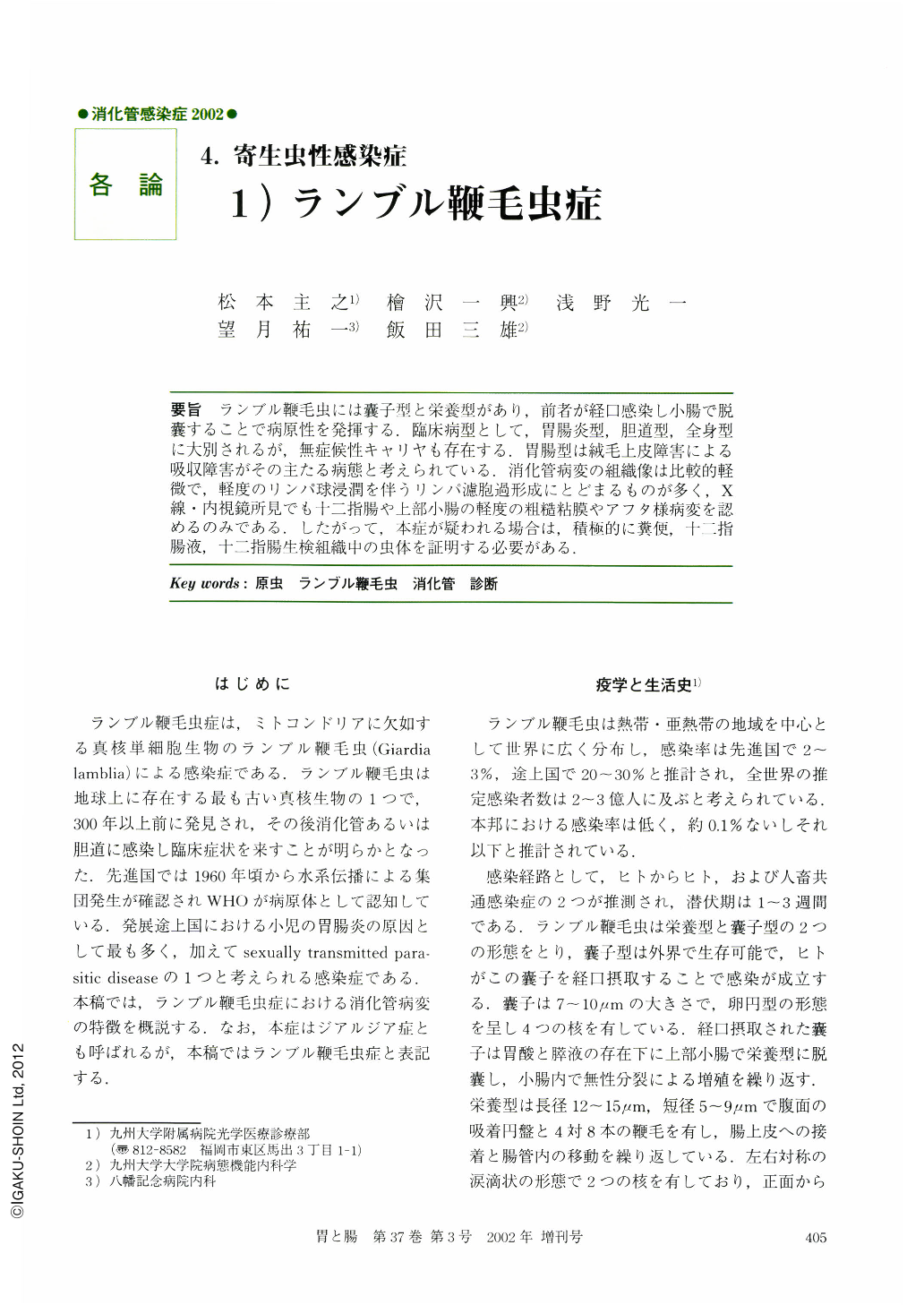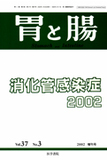Japanese
English
- 有料閲覧
- Abstract 文献概要
- 1ページ目 Look Inside
- サイト内被引用 Cited by
要旨 ランブル鞭毛虫には囊子型と栄養型があり,前者が経口感染し小腸で脱囊することで病原性を発揮する.臨床病型として,胃腸炎型,胆道型,全身型に大別されるが,無症候性キャリヤも存在する.胃腸型は絨毛上皮障害による吸収障害がその主たる病態と考えられている.消化管病変の組織像は比較的軽微で,軽度のリンパ球浸潤を伴うリンパ濾胞過形成にとどまるものが多く,X線・内視鏡所見でも十二指腸や上部小腸の軽度の粗糙粘膜やアフタ様病変を認めるのみである.したがって,本症が疑われる場合は,積極的に糞便,十二指腸液,十二指腸生検組織中の虫体を証明する必要がある.
Giardia lamblia is one of the most common protozoa which infects humans. The life cycle of the protozoa is composed of two forms, one being the cyst and the other the trophozoite. The former excystate to the latter in the upper part of the small intestine. The pattern of the infection is divided into the intestinal form and the hepatobiliary form, according to the main site of involvement. The intestinal form is characterized by malabsorption which is attributed to mucosal damage in the upper small intestine. Because of less severe inflammatory infiltrate, radiography and endoscopy can detect minimal changes such as lymphoid hyperplasia, aphthous lesions and coarse mucosa. However, confirmation of the protozoa in the feces, in the duodenal juice or in the duodenal biopsy seems to be necessary for the accurate diagnosis of the infection.

Copyright © 2002, Igaku-Shoin Ltd. All rights reserved.


